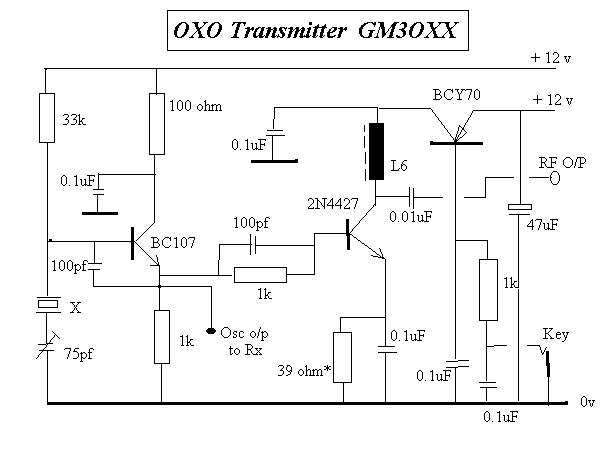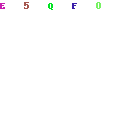In the new February RadCom that just dropped on my mat at lunchtime there is a copy of the band plans for all bands from 136kHz to 134GHz. What I fail to understand is why does the RSGB appear so anti-AM?
For many years now there has been a clear choice for an AM centre of activity on 144.55MHz. The RSGB has been made aware of this on many occasions and yet still we have a (begrudging) footnote, just about visible if you look hard, saying this is where to look. Even this comment ends with, "although this frequency is not officially recognised within the 2m band plan". Why not? We have a FAX calling frequency listed and goodness knows how many DV Internet Voice Gateway frequencies listed, yet we cannot be allowed an official AM centre of activity properly listed! AM is not a common mode these days, but those who enjoy the mode need to know where to meet on the band. The RSGB is giving no help at all here.
I also get frustrated with the 10m band plan where AM is again almost treated as a disease. Most AM activity has been in the 29.0-29.1MHz segment for years now: this is THE part of the band where AM users congregate, yet the all-mode section with up to 6kHz bandwidth does not start until 29.1MHz upwards! Does no-one who creates these band plans actually listen to see what actually goes on? In the last 30 years I have had many AM contacts on 10m and not one outside 29.0 - 29.1MHz.
So, next time you consider the band plans, please:
(a) Add an AM "centre of activity" frequency into the 2m band plan - it is 144.550MHz in case you don't know.
(b) Show 29-29.1MHz as the AM sub-band in the 10m band plan.
16 Jan 2013
Back on 137kHz TX
 |
| QRSS and CW beacon TX for 137.685 kHz |
Instead, I ended up building a new CW, QRSS3 and QRSS30 8W beacon transmitter using an IRF640 PA device. This evening and overnight the beacon will run QRSS3 on approximately 137.685kHz and I have requested reports and screenshots.
The antenna being used is my 20m spaced earth-electrode pair set-up used very successfully on 472kHz last weekend. On 137kHz signals are much weaker than on 472kHz, so I await reports with interest.
The whole unit runs quite cool when housed in a plastic box. Switches on the front of the boxed unit allow up to 7 pre-programmed messages to be beaconed at varying speeds. As normal, I use the K1EL beacon chip for the beacon message generation. The signal source is a 3.579MHz crystal in a divide by 26 circuit implemented in a PIC like device and kindly supplied to me by a French amateur Francis F6HSI a few years ago.
15 Jan 2013
eQSL cards
 |
| Brazilian QSL card received via www.eqsl.net |
Checking my totals I see that I have 55 countries confirmed by eQSL cards. All these will be with 2.5W or less on all modes, mostly SSB on 10m and 6m. Many of my DXCC countries pre-date the eQSL era and I have not been that active in DXing as such in recent years, apart from the occasional contest like CQWW SSB, which I enjoy with QRP. As you know, I prefer to carry out crazy experiments somewhat on the edge of sanity on strange bands with odd antennas instead!
More IC7100 photos
 |
| http://www.universal-radio.com/catalog/hamhf/3071.jpg |
Labels:
ic7100,
icom,
universal radio
14 Jan 2013
Another earth-electrode station on 472kHz
If you spot G4HJW/1 on the WSPR database on 472kHz this is Bernie who is about 9km from me on his 30m baseline earth-electrode antenna. G4HJW is him on his Marconi by the way. Looking at his unique spots, he is getting reports from all over the place: not as good as his Marconi but reports out to over 900km isn't bad (GM, F, PA, G etc).
Next week, after the snow has gone, we hope to have a 2-way CW QSO on 472kHz using earth-electrode antennas at each end. That should be fun!
Next week, after the snow has gone, we hope to have a 2-way CW QSO on 472kHz using earth-electrode antennas at each end. That should be fun!
An INDOOR loop on 472kHz TX?
Over the last few days I have been receiving quite strong WSPR signals on 472kHz from Richard G4KPX who is in Ely, some 14km north east of me. Looking on the WSPR database I see he has been copied up to 573km on the band using WSPR. Now, in a email from Richard today he revealed his secret: he is using just 1W RF into an indoor 3m x 2m single turn loop made of 10mm pipe leaning against the wall of his spare bedroom! The EIRP is at most 100uW and probably a lot less because of the losses with mounting it where he does and the capacitors used to resonate it. This is a pretty amazing set of results.
Richard has been spotted across the Atlantic on 160m using the same indoor antenna and has similar magnetic loop antennas for all HF bands I believe.
So, if you believe you have no space for an MF band TX antenna, and you don't even have a garden to put a couple of earth-electrodes in the ground, you could always follow Richard's example.
Some months ago I believe one of the German 136kHz stations (DF6NM?) tried something similar using a large coax as a big indoor loop on 136kHz and also got some quite decent results. Never say you cannot erect an antenna! What you need is a bit of ingenuity.
Richard has been spotted across the Atlantic on 160m using the same indoor antenna and has similar magnetic loop antennas for all HF bands I believe.
So, if you believe you have no space for an MF band TX antenna, and you don't even have a garden to put a couple of earth-electrodes in the ground, you could always follow Richard's example.
Some months ago I believe one of the German 136kHz stations (DF6NM?) tried something similar using a large coax as a big indoor loop on 136kHz and also got some quite decent results. Never say you cannot erect an antenna! What you need is a bit of ingenuity.
.....and NOT a TS-990 - something better!
Just to put some perspective on things, this is a small CW transmitter that just about anyone could build for a few pounds only and use it to work stations all over the world with a modest dipole antenna or similar. The OXO transmitter was designed by GM3OXX and is a classic design.
Power from the OXO is around 800mW - 1.5W depending on the band and on the final transistor and its emitter resistor. I have used this design on HF and had hours of fun with it. Long after a rig like the TS-990 would be gathering dust, this little beauty will carry on giving pleasure with each and every contact.
 |
| http://www.qsl.net/g3pto/OXO.gif |
Kenwood TS-990 - UK price
Well my fellow blog readers, I have some good news for you!
The new Kenwood TS-990 is now available to order for Martin Lynch, and I expect many others, for only £6600 with deliveries expected February. I am sure many will buy this fine radio, but as this is about ten times my budget (once every 10 years or so) for a new HF transceiver, I will not be one of them.
The new Kenwood TS-990 is now available to order for Martin Lynch, and I expect many others, for only £6600 with deliveries expected February. I am sure many will buy this fine radio, but as this is about ten times my budget (once every 10 years or so) for a new HF transceiver, I will not be one of them.
 |
| http://www.jayceecoms.com/images/Kenwood-ts990s-1.jpg |
Labels:
jayceecoms,
martin lynch,
ts-990
13 Jan 2013
472kHz update
With nearly 2 weeks of operation on the new band with very low EIRP levels (varying from typically 5-10mW with 100mW on just one occasion) perhaps it is time to summarise how things have been going. A check of the WSPR database shows almost 70 unique reports across Europe of my signals from just a few km away to 1736km. I have still not managed to be copied by TF3HZ in Iceland at just over 2000km and this is my next target. To achieve this will need me to re-erect and better optimise my Marconi vertical. With some optimisation it should just about be possible achieve 200mW EIRP.
On CW I have received a report from over 160km away when I was calling CQ. A JT9-1 QSO with G3ZJO at 79km is still my best 2-way QSO, although I believe it should be possible to work much further with this mode (I worked OR7T in Belgium with it on 500kHz).
So, pretty satisfying results so far. This has been helped by the huge number of stations currently monitoring WSPR on the new band - frequently over 40 people at any one time. Right now there are 59 stations monitoring!
On 136kHz the challenge with small antennas and low power is considerably harder on WSPR as there are too few stations monitoring: even if the signal was getting several hundred km, one can only tell if someone is at the far end and reporting it.
 |
| Unique WSPR spots in the last 2 weeks on 472kHz |
So, pretty satisfying results so far. This has been helped by the huge number of stations currently monitoring WSPR on the new band - frequently over 40 people at any one time. Right now there are 59 stations monitoring!
On 136kHz the challenge with small antennas and low power is considerably harder on WSPR as there are too few stations monitoring: even if the signal was getting several hundred km, one can only tell if someone is at the far end and reporting it.
Labels:
136khz,
472-479khz,
jt9-1,
wspr
Solar activity this month
A quick glance at the solar data over the last week or two will convince anyone that things are looking up. Many believe that a second peak, not that uncommon, is likely soon and that this peak will actually turn out to be the real peak of cycle 24. It is some time since we have seen sunspot numbers as high as this for so many days in a row. In the end, the peak is usually based on smoothed sunspot numbers so it will be very many months into the future before we will know if the recent upsurge has helped to make a new smoothed peak.
I see there is a possibility of M or X class flares in the next two days which could affect propagation, although I think it improbable these will be on a scale likely to knock out power stations and satellites. At some future point, most likely long after all of us are long dead and at a time when the cycles return to huge numbers of sunspots, it will happen though. Of course large solar flares can happen at any time, so you never know.
For more data on the recent solar activity see http://www.solen.info/solar/ .
I see there is a possibility of M or X class flares in the next two days which could affect propagation, although I think it improbable these will be on a scale likely to knock out power stations and satellites. At some future point, most likely long after all of us are long dead and at a time when the cycles return to huge numbers of sunspots, it will happen though. Of course large solar flares can happen at any time, so you never know.
For more data on the recent solar activity see http://www.solen.info/solar/ .
Subscribe to:
Comments (Atom)


